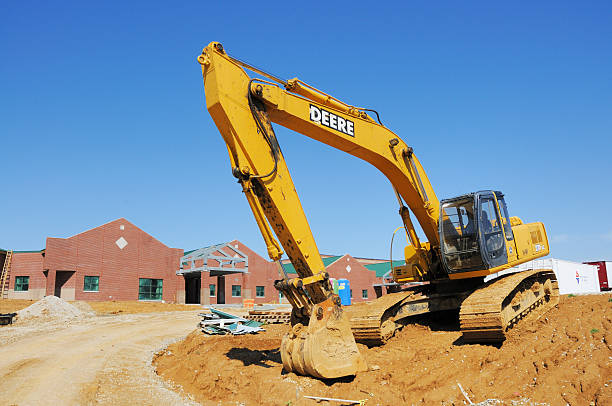
Opening of News KVS
The opening of new Kendriya Vidyalayas (KVS) throughout India marks a significant development in the country’s education sector. With the Indian government’s continuous effort to make quality education accessible to every child, KVS plays a pivotal role in fulfilling this mission. In this article, we’ll explore the recent expansions of KVS, their importance in the Indian education system, and the impact they are likely to have on students across the nation.
What is Kendriya Vidyalaya Sangathan (KVS)?
Kendriya Vidyalaya Sangathan (KVS) is an autonomous organization under the Ministry of Education, Government of India. It manages a network of schools primarily for the children of Indian government employees who are frequently transferred due to their jobs. Established in 1963, KVS aims to provide a uniform standard of education across India while offering a central curriculum and a focus on holistic development.
Why the Need for New KVS Across India?
As India continues to grow and develop, the demand for quality education has been rising, especially in remote and underserved areas. The government’s decision to open new Kendriya Vidyalayas is a response to this need. Here’s why the expansion of KVS is necessary:
- Expanding Reach: New KVS schools are opening in various states, including remote and rural areas, ensuring that students across the nation have access to the same standard of education.
- Addressing Growing Population: India’s growing population and the increasing number of children requiring education have pushed the government to ensure adequate schooling facilities.
- Empowering Government Employees: With more KVS schools, the children of central government employees, who often relocate due to work assignments, will have access to consistent and high-quality education, regardless of their location.
Recent Developments in the Opening of New KVS Schools
In recent years, the Indian government has made significant strides in opening new Kendriya Vidyalayas across the country. The expansion is focused on both urban and rural areas to cater to the increasing educational needs. Some of the recent developments include:
- New Schools in Tier 2 and Tier 3 Cities: The focus is on building schools in smaller cities, towns, and semi-urban areas that were previously underserved. This allows students in these regions to benefit from the centralized curriculum and well-structured educational framework.
- Upgrading Existing Infrastructure: In addition to building new schools, many existing KVS schools are undergoing renovations and infrastructure upgrades to accommodate more students and provide a better learning environment.
- Government Budget Allocations: The government has increased its budgetary allocation for KVS to meet the growing demand. This includes funding for new buildings, teaching resources, and staff recruitment.

How Will New KVS Schools Impact Students?
The opening of new KVS schools throughout India will have several positive outcomes for students:
- Access to Quality Education: KVS is known for its high academic standards and emphasis on co-curricular activities. The opening of new schools means more students can benefit from these quality educational offerings.
- Uniform Curriculum: With a uniform curriculum across all KVS schools, students will have the opportunity to continue their education seamlessly, even if their parents are transferred to a new location.
- Holistic Development: Besides academics, KVS places a strong emphasis on sports, arts, and cultural activities, ensuring that students grow into well-rounded individuals.
The Role of Teachers in New KVS Schools
Teachers are the backbone of any educational institution, and this holds true for KVS schools as well. The recruitment of skilled and experienced teachers for the new KVS schools is essential. The government has made efforts to ensure that KVS hires the best professionals to maintain the quality of education, including:
- Rigorous Selection Process: Teachers undergo a thorough selection process, which includes competitive exams and interviews, to ensure they meet the high standards expected by KVS.
- Continuous Professional Development: Teachers in KVS schools receive regular training and development programs to stay updated with the latest educational practices.
The Future of KVS: What’s Next?
Looking ahead, the future of Kendriya Vidyalayas in India seems promising. Here are some potential developments that could shape the future of KVS:
- Digital Integration: As technology becomes an integral part of education, KVS is likely to incorporate more digital tools and platforms for online learning, making education more accessible.
- Inclusive Education: KVS will likely focus on increasing inclusivity, ensuring that students with disabilities or other special needs have access to quality education.
- Expanding Beyond India: There are discussions about expanding the reach of KVS to Indian diaspora communities abroad, allowing children of Indian citizens living overseas to receive the same quality education.
Conclusion: A Bright Future for KVS Schools
The opening of new Kendriya Vidyalayas throughout India is a step towards creating an equitable and accessible education system for all students. With increased access to quality education, more students will have the opportunity to excel academically, participate in extracurricular activities, and develop their skills to contribute to society. As the government continues to expand and improve the KVS network, the future of education in India looks brighter than ever.
FAQs
- What is the main aim of Kendriya Vidyalayas?
Kendriya Vidyalayas aim to provide high-quality education to the children of central government employees and other students while promoting holistic development. - How many new KVS schools are opening in India?
The exact number of new schools varies, but the government has committed to opening several new Kendriya Vidyalayas, especially in underserved areas. - What is the curriculum followed by KVS schools?
KVS schools follow the NCERT (National Council of Educational Research and Training) curriculum, ensuring consistency and high academic standards. - Can students from private schools apply to KVS?
Yes, while KVS primarily serves children of government employees, students from other backgrounds can apply based on available vacancies and admission criteria. - How does KVS contribute to overall student development?
In addition to academics, KVS focuses on extracurricular activities such as sports, arts, and cultural programs, ensuring well-rounded development for students.
